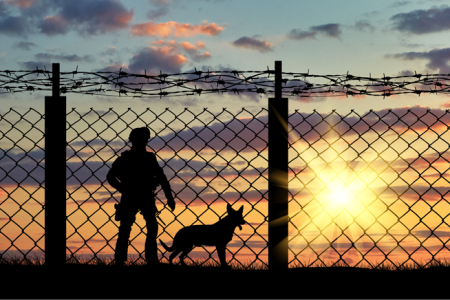Building security for border control
Tim Compston, Features Editor at SecurityNewsDesk, investigates how border controls might be toughened up in light of the heightened terrorist threat and the large number of migrants flooding into Europe.
There appears to be a growing realisation that the vision of free movement in a Europe without borders, while admirable, is far from ideal for security if initial checks at the shared external border are ineffective or haphazard. Sadly, some IS (Islamic State) sympathisers have already taken advantage of the shortcomings at the EU’s external border to engage in attacks, with the first Stade de France bomber apparently posing as a Syrian refugee. Fabrice Leggeri, Executive Director at Frontex – the EU’s border agency – has admitted to the media that the ongoing civil war in Syria makes it hard to identify fake documents. Acknowledging the inadequacies of the current set-up, EU leaders announced at a Brussels summit – late last year – the ramping-up of additional measures including a European Border and Coast Guard with more resources and powers than the existing Frontex border agency.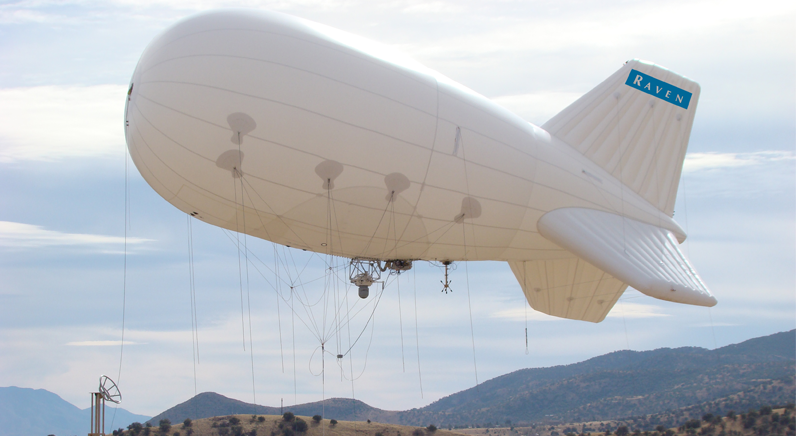 View from above
View from aboveTaking a closer look at the sort of solutions that could, potentially, be employed to strengthen border security in Europe, and elsewhere, a number of commentators feel that aerostats have much to commend them. Lockheed Martin’s Vice President of C4ISR, Dr Robert Smith, for example, points to the fact that aerostats can support the sort of 24/7 surveillance that simply isn’t possible with manned and unmanned aircraft: “With the capability to provide panoramic day/night surveillance in extremely challenging weather, aerostats have shown themselves to be very successful in supporting border protection efforts.” Craig Laws, Senior Product Manager at Raven Aerostar, is in agreement over the gains that aerostats can deliver on the operational front:”The ability to keep a persistent watchful eye enables operators to detect suspect individuals and vector border patrol guards to interdict them. For any kind of sensor you want to put on a tower, but would like higher, an aerostat is a good option.” Rapid radar
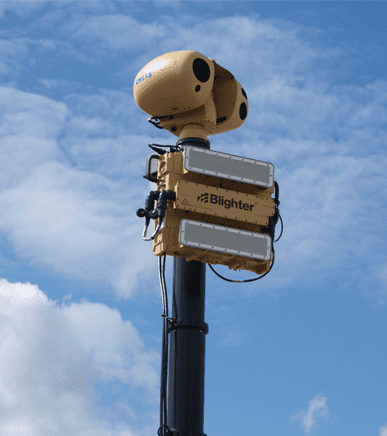
Coming back down to earth, ground-based radar also has the potential to deliver enhanced situational awareness at border ‘hotspots’. A good example of the sort of technology now coming down the track is the rapidly deployable Blighter Scout from Blighter Surveillance Systems. Designed to be mounted on a vehicle, and trailer masts, this comprises the Blighter Revolution 360 Passive Electronic Scanning Array (PESA) radar, a low light camera, a thermal imaging system and an integrated radar tracker. The right range
On the subject of specialised cameras for border control purposes, Jes Nagel, CEO of Fibrenetix, feels it is important to make a clear distinction between long-range and ultra-long range models: “Long-range goes from 15 km to 20 km for detection whereas we [with ultra-long range] go to 38 km in normal conditions.” Asked to clarify what it is possible to pick-up distance-wise, Nagel says that at 38 km you are talking about detecting a van whereas a human would come into play at something like 19 km, depending on the conditions to hand. Cargo inspection
With all the vexed discussion around the practicalities of border security and counter terrorism, a major challenge is, undoubtedly, how to pick-up on suspicious items concealed within vehicles and maritime containers. In the drive for smarter solutions, Smiths Detection recently launched iCmore, an automatic detection software suite for cargo inspection X-ray systems. According to Smiths Detection, iCmore focuses user’s attention on abnormalities within the load during the scanning process. Shan Hood, Vice President, Product and Technology at Smiths Detection, believes that iCmore is a game-changer: “iCmore supports an important step change by offering a greater degree of automation. It will make a major contribution to the fight against international terrorism and smuggling by speeding up the inspection of cross-border traffic.”
Terminal security
One flashpoint border area that is now benefiting from a more secure perimeter is the Eurotunnel and, specifically, the Coquelles terminal near Calais, France. Jacksons Fencing reports that it has successfully completed 8.5 km of security fencing and associated gates as part of the Anglo – French commitment to secure key parts of the site against unusual and dangerous migrant activity. Commenting on the project, Peter Jackson, CEO of Jacksons Fencing says: “I don’t believe that any of us involved in the higher end of the perimeter security industry subscribe to the idea of creating an ‘anti-immigration fence’ as it has been dubbed by some but rather to providing a ‘protect and defend barrier’ which serves to keep everyone safe and Eurotunnel operating efficiently.” Interoperability
Considering cross-border communication to deal with major terrorist incidents, and other events, moving ahead, emergency service interoperability is high on the agenda. A case in point is the co-operative Nor Swe ISI (Inter System Interface) that has been rolled out between Norway and Sweden to link the Norwegian Emergency Network and the Swedish Emergency Network – Rakel. The Norwegian-Swedish ISI project parallels the development of Nødnett, the Norwegian nationwide TETRA system, where Motorola Solutions is the prime contractor. When the ISI project is completed, Nødnett and Rakel will work together. In practical terms this means that a Swedish Rakel user located in Norway can use Nødnett to get in touch with a user on the Rakel network in Sweden.
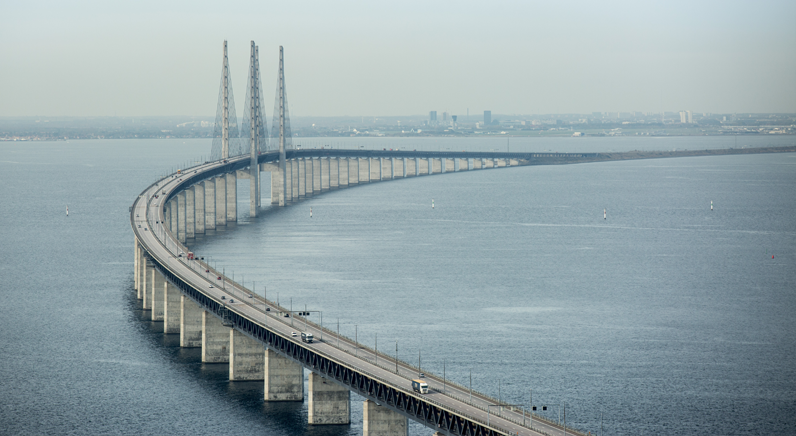
Staying in Scandinavia, in light of the concerns about the ongoing security threat and the unprecedented flow of migrants, many of the countries that make-up the Schengen area in this part of the world – and beyond – have re-introduced border controls. For its part, Sweden has rolled out ID checks for train, bus, and ferry passengers from Denmark placing the landmark Øresund Bridge very much on the frontline of these changes.
 So what is it like having responsibility for monitoring one of the world’s largest bridge and tunnel combinations? Jopas Wulff, the control room manager with the Øresund Bridge, is one man who has the answer. By any measure the Øresund Bridge which first opened in 2000 is an impressive structure carrying 18,000 – 19,000 vehicles each day. This vital link between Sweden and Denmark stretches for 16 km and comprises a bridge, artificial island and tunnel, supporting a four-lane highway and railway line.
So what is it like having responsibility for monitoring one of the world’s largest bridge and tunnel combinations? Jopas Wulff, the control room manager with the Øresund Bridge, is one man who has the answer. By any measure the Øresund Bridge which first opened in 2000 is an impressive structure carrying 18,000 – 19,000 vehicles each day. This vital link between Sweden and Denmark stretches for 16 km and comprises a bridge, artificial island and tunnel, supporting a four-lane highway and railway line.
Asked about the impact of the heightened checks for those travelling to Sweden, Wulff replies that the implementation of the border controls was fast-tracked, in fact it came in effectively overnight with all vehicles to be checked by the police. He reveals that initially the Danish police were concerned as to how the new controls would impact the toll station: “They imagined big issues with congestion all over the bridge and down to the tunnel and that they would have to shut the highway down at the airport.”
However Wulff reckons that this worst-case scenario hasn’t materialised: “We do have some congestion in the rush hour between 3.00 and 6.00 but the police are adding more personnel so they have the resources down at the toll station.” Wulff says that, by contrast with the road situation, there are more headaches for those travelling by train, especially for commuters returning from Denmark: “If you are on a train you have to get off at Kastrup station, go through a manual ID check, and then board another train to Sweden. It takes more time, there are delays, and the trains don’t go as often as they used to,” explains Wulff.
Better detectionWhen individuals fail the checks Wulff tells me that some are still determined, whatever the hazards, to try again and walk on the highway to reach the tunnel to Sweden: “So far when we have seen this they have been taken care of by the Danish police and we fire up warning signs for drivers to prevent an incident.”
Wulff adds that urgent remedial action is in the works so that migrants – or other individuals – don’t have an opportunity to sneak through the railway tunnel whose entrance, he admits, has been a surveillance weak link. The project, scheduled for completion by early March, will see the positioning of new IR and thermal cameras at the tunnel’s entrance: “This is so we can detect people in motion,” explains Wulff.
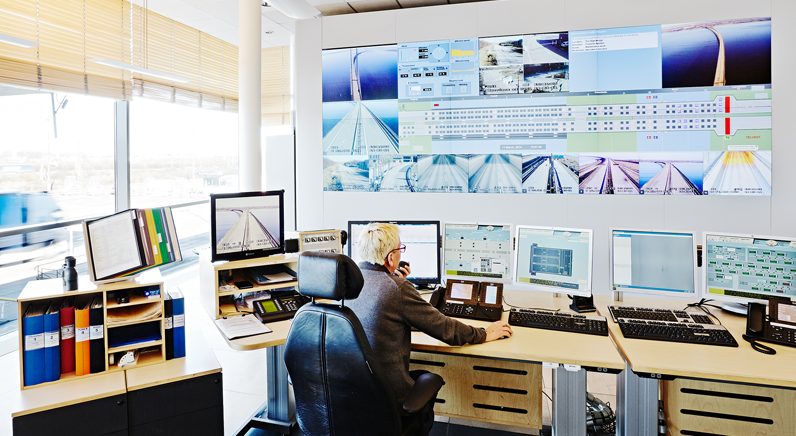
Even before the most recent developments, to ensure everything was running smoothly, and unusual activity was picked up at the earliest stage, Wulff says that steps were taken to swap out an antiquated video-based detection system, which his team were struggling to keep operational. Another catalyst for change, reflects Wulff, was the reality that the technology for detecting stopped cars, dropped loads, cars that go in the opposite direction – what he refers to as ‘ghost drivers’, slow vehicles and even pedestrians – had accelerated in its level of performance: “This makes the systems today much more sensitive and capable of detecting different sorts of obstacles and issues.”
Of course for a bridge like Øresund it is not just about keeping a close eye on the roadway, from a safety and security perspective, employing PTZ (Pan, Tilt and Zoom) cameras allows the monitoring of the wider structure above and below the deck for people or objects that are not supposed to be there. Down at the water level, Wulff reveals the importance of being able to communicate and work closely with other entities, in this case the coastguard which has access to state-of-the-art technologies like radar which simply aren’t a practical proposition for bridge operators to run themselves: “There is a function at the Swedish and Danish coastguard – VTS (Vessel Traffic Surveillance) – that monitors every boat that passes through the Øresland.”
[su_button url=”https://www.securitynewsdesk.com/newspaper/” target=”blank” background=”#df2027″ color=”#ffffff” size=”10″ radius=”0″ icon=”icon: arrow-circle-right”]For more stories like this click here for the SecurityNewsDesk Newspaper[/su_button]








